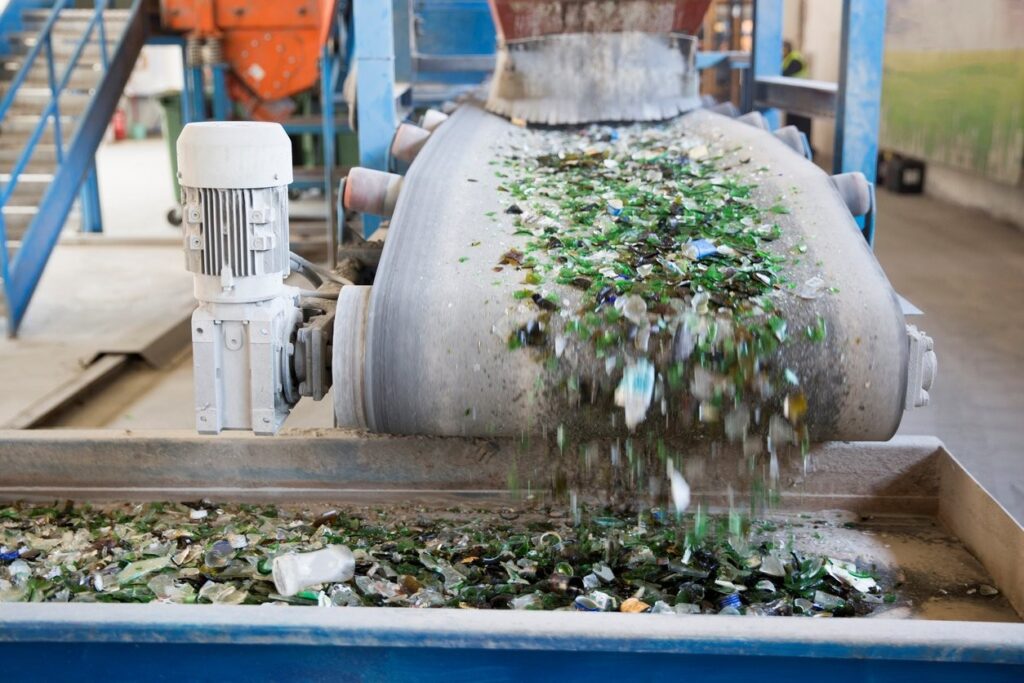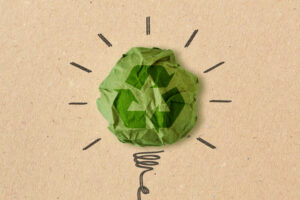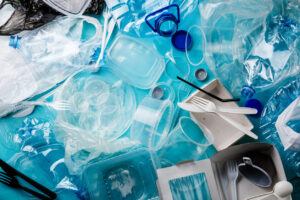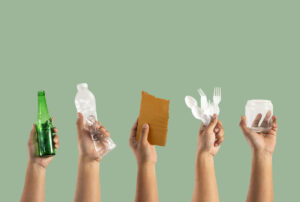Following on from paper and cardboard recycling, let’s take a look at the method for recycling glass.
Glass is one of the few materials that can be recycled endlessly without losing quality – but not all glass is created equal. Here’s what you need to know about recycling glass bottles and jars.
What Glass Can Be Recycled?
Only glass bottles and jars used for food and drink can be recycled through standard recycling services. These include:
- Beverage bottles – wine, beer, soft drink, juice.
- Glass jars – sauces, condiments, spreads, preserves.
Types of Glass That Cannot Be Recycled
Glass items that weren’t originally used for food or beverage packaging should not be placed in your recycling bin. These types of glass are manufactured differently and can’t be processed in the same way. Common examples include:
- Drinking glasses and wine glasses
- Pyrex and ovenproof dishes
- Mirrors and window panes
- Ceramics, crockery, tiles, and vases
- Light bulbs or decorative glassware
These materials have higher melting points or contain additives that make them incompatible with container glass recycling.


Best Practice for Glass Recycling Preparation
Recycling glass effectively starts with the right preparation. For businesses, especially those handling food, beverage, or hospitality waste, following a few simple steps can make a big difference to the quality and success of glass recycling.
Do:
- Empty all bottles and jars – A quick rinse is ideal, especially if contents are sticky or strong-smelling. Leftover food or liquid can contaminate the recycling stream.
- Remove lids and caps – These are often made from different materials (metal or plastic) and should be separated. Depending on your recycling service, these may be recycled separately or placed in general waste.
- Keep colours separate (where required) – In some commercial settings or bulk collections, separating clear, brown, and green glass can improve recycling outcomes.
- Use dedicated bins for glass only – If your business has access to glass-only recycling, keep other materials out to avoid contamination.
Don’t:
- Don’t recycle broken glassware, window glass, ceramics, or oven-proof glass.
- Don’t place glass inside plastic bags – this can disrupt sorting at recycling facilities.
- Don’t crush glass unless your waste provider specifically requests it.
Common Mistakes With Glass Recycling
Some of the most common mistakes include:
- Wrong glass types – Don’t recycle drinking glasses, ceramics, mirrors, or ovenware. Only bottles and jars are accepted.
- Leaving food or liquid inside – Rinse containers to avoid contamination.
- Lids left on – Remove metal or plastic lids before recycling.
- Glass in the wrong bin – Use the correct recycling stream (e.g. glass-only or commingled where accepted).
- Glass in plastic bags – Never bag glass, it won’t be sorted and may go to landfill.
The Glass Recycling Process: Step-by-Step
Firstly the load of mixed recycling reaches the materials recovery facility (MRF) and is separated into the various waste streams.

Separation
The glass is separated into colours (clear, brown and green).
Crushing
The glass is crushed and this product is called ‘cullet’.
Transportation
The cullet is then transported to the glass manufacturer to make new products.
Remanufacture
The glass manufacturer will melt the cullet in a furnace (with some additional raw materials) and the melted glass is then tipped into moulds to make new jars, bottles and containers. Recycled glass can also be used as building aggregate, in water filtration, building materials and in some cases to form part of a road base.
Glass can be recycled endlessly (without loss of quality) in this manner. Making new glass from cullet actually saves energy as recycled glass melts at a lower temperature than the virgin raw material.
Environmental Benefits of Glass Recycling
Recycling glass doesn’t just reduce waste, it delivers significant environmental benefits by saving energy, conserving resources, and keeping materials out of landfill.
Saves Energy and Reduces Emissions
Using recycled glass (cullet) in manufacturing lowers the melting temperature, saving up to 30% of the energy compared to making glass from raw materials. This reduces greenhouse gas emissions significantly.
Conserves Raw Materials
Recycling glass reduces the need for virgin raw materials like sand, soda ash, and limestone, preserving natural resources and reducing environmental disruption.
Reduces Landfill Waste
Glass makes up a notable proportion of waste going to landfill. Recycling glass keeps this material out of landfill, where it would otherwise take thousands of years to break down.
Australian Glass Recycling Statistics & Targets
Victorian Glass Recycling Infrastructure Expansion
Victoria is significantly enhancing its glass recycling capabilities. Visy has invested $50 million to upgrade its Laverton facility, doubling its capacity to process glass.
Introduction of Purple-Lidded Glass Recycling Bins
To improve glass recycling rates, Victoria is rolling out purple-lidded bins dedicated solely to glass collection. This initiative (which is already in place in some Council kerb side collections) aims to reduce contamination in mixed recycling streams and increase the quality of recycled glass.
Recycling Victoria Policy and Statewide Targets
The Victorian Government’s Recycling Victoria Policy, backed by a $515 million investment, sets ambitious goals for waste reduction and recycling. The policy includes the introduction of a four-bin system by 2030, which will standardise waste collection across the state and facilitate more efficient recycling processes.
KS Environmental offers flexible and reliable collections for glass and mixed recycling. If you are interested in finding out more about recycling glass please contact us.
Sources: Sustainability Victoria, Planet Ark, Australian Packaging Covenant Organisation (APCO)



